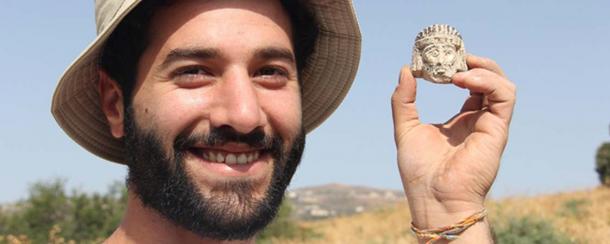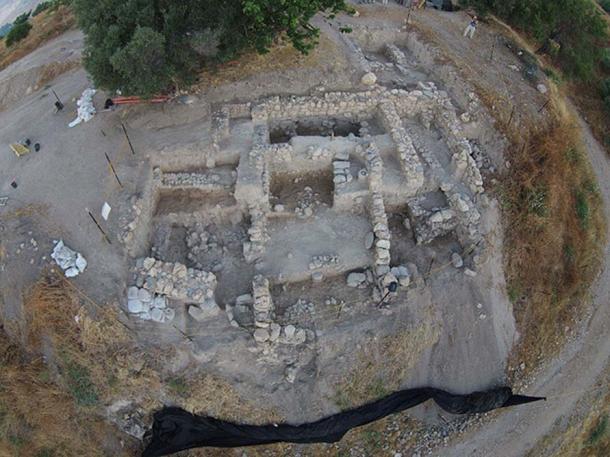Does 2,800-Year-Old Statue Head Depict a Forgotten Biblical King?
Archaeologists are in the midst of a mystery of forgotten identity. They are trying to discover the name behind a 2,800-year-old face found in the ancient city of Abel Beth Maacah in northern Israel.
They are perplexed by the head of a statue which may have been made to portray the likeness of a biblical king.
The head is a small 2 by 2.2 inches (5.1 by 5.6 centimeters) artifact which archaeologists believe once belonged to a statuette which measured approximately 8 to 10 inches (20 to 25 cm) in height, according to Live Science .
It is the representation of a man who had long black hair, a black beard, almond-shaped eyes and a yellow and black headband. His expression portrays the image of someone who had authority and demanded respect.
Which sent the team out to excavate the Abel Beth Maacah site, states that the statuette’s head was found in a possible administrative building. Azusa Pacific University’s Robert Mullins described the discovery .
Mullins that the location and high quality of the carving of the head suggest that it was meant to represent a member of Abel Beth Maacah’s elite class, “We’re guessing probably a king, but we have no way of proving that,” Mullins said.

An art historian who examined the small head has suggested it depicts a king or other important Aramean official. However, Mullin understands that more research will need to be completed before that claim could become a conclusion.
Nonetheless, the idea is an intriguing one for Mullin, who writes , “If the head proves to depict an Aramean, it would suggest that the local Aramean population continued to live there as Israelite citizens long after Abel Beth Maacah fell under the sway of the United Monarchy and the northern kingdom of Israel.”
Researchers received a timeframe of 902-806 BC when some material found near the sculptured head was radiocarbon dated.
Mullins said that Abel Beth Maacah changed hands many times during that period as it was bordering the kingdoms of Israel, Tyre, and Aram-Damascus.
Perhaps more information will be gathered when excavations start up again this summer at the administrative building of the Abel Beth Maacah archaeological site.

The intrigue of the artifact has garnered much attention. It has become a subject for a discussion at the 44th Annual Archaeological Congress at Ben-Gurion University of the Negev, the topic for a paper which will be published this month in the journal Near Eastern Archaeology , and it is a fascinating addition to the collection of the Israel Museum in Jerusalem.
